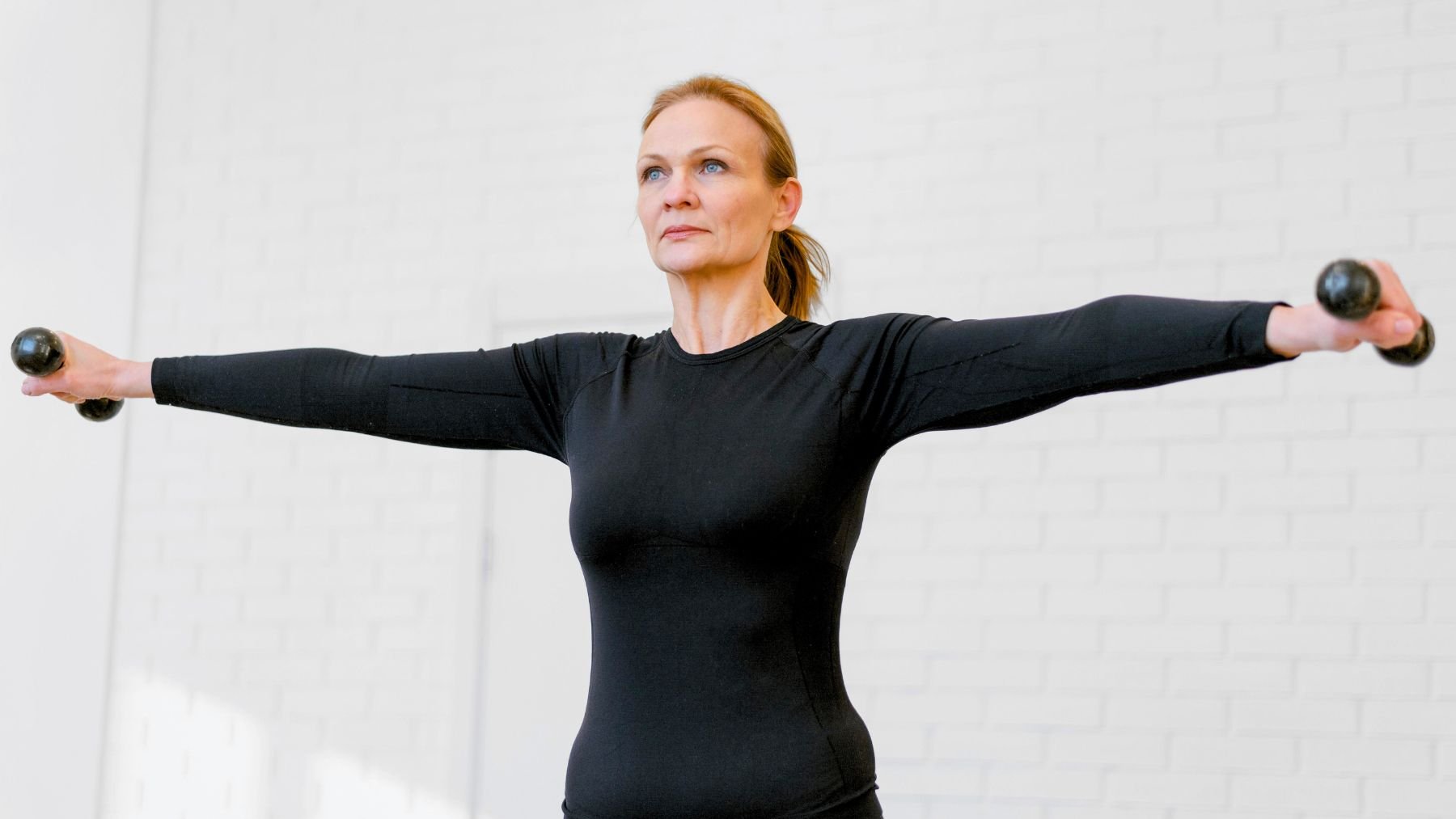If you’re over 40 and want to maintain your balance and coordination, you might benefit more from setting aside the yoga mat in favor of a routine centered on bodyweight training. A six-month study comparing calisthenics and Pilates demonstrated that exercises, such as squats, lunges, and other dynamic movements, led to superior improvements in coordination, balance, and lower-body strength in women averaging 40 years old.
Although Pilates offers benefits like improved core stability and posture, calisthenics effectively addresses the physical transformations experienced during perimenopause and beyond by targeting functional strength, neuromuscular coordination, and mobility.
Here, we’ll break down how these exercises counteract muscle loss, stimulate bone remodeling, and support enhanced proprioception and balance. We’ll also outline several moves you can incorporate into your routine starting today.
Why calisthenics is the optimal exercise option for women over 40
As women transition into their 40s and beyond, hormonal shifts, such as declining estrogen levels, accelerate muscle atrophy and reduce bone density, increasing the risk of stiffness, falls, and fractures. These physiological changes often make static stretches, gentle mobility exercises, or low-intensity workouts insufficient to address these challenges.
Calisthenics, which leverages bodyweight resistance, confronts these issues directly. A six-month study published in the Journal of Sport Rehabilitation revealed that women practicing calisthenics experienced greater improvements in coordination and balance compared to those following Pilates routines.
Exercises such as squats, lunges, and step-ups stimulate the bone remodeling process that is crucial during perimenopause and menopause, when bone density declines rapidly and the risk of osteoporosis increases. Although Pilates is highly regarded for enhancing core strength and postural control, it often lacks the load-bearing intensity required to trigger the robust bone-strengthening response.
In addition, calisthenics enhances proprioception—the body’s ability to sense its position in space—through stability-challenging movements such as single-leg balances or lateral shuffles, sharpening reflexes and reducing the risk of missteps or falls.
Whereas Pilates emphasizes controlled, isolated movements, calisthenics incorporates explosive exercises like jumps, push-ups, and plyometric variations that demand coordinated efforts among multiple muscle groups. This not only builds lean muscle mass to counteract the losses but also develops a body that is resilient against the physical unpredictability of everyday challenges.
Easy calisthenics moves you can start today
You need no special equipment or gym membership to enjoy the benefits of calisthenics. The following five exercises use only your body weight to enhance coordination and balance. Aim for 2-3 sets of 10-15 repetitions, performing these routines 3-4 times weekly to experience consistent improvement.
- Squats: Stand with your feet hip-width apart. Lower your body in a motion that mimics sitting back into a chair, ensuring your knees remain behind your toes. Then, push through your heels to return to a standing position. This exercise builds strength in the quadriceps, glutes, and core.
- Lunges: Step one foot forward and bend both knees to form 90-degree angles. Push off with the leading leg to return to the starting position, then switch sides. This movement improves unilateral strength, enhances hip stability, and contributes to better balance and coordination.
- Plank to push-up: Begin in a forearm plank position. Sequentially push up onto one hand at a time until you reach a full high plank before lowering yourself back to the forearm plank. This fluid movement engages the core, shoulders, and arms.
For more benefits, pair these exercises with dynamic moves like lateral shuffles or gentle jumps (if your joints allow it). Focus on executing controlled, deliberate movements rather than rapid or erratic actions.

